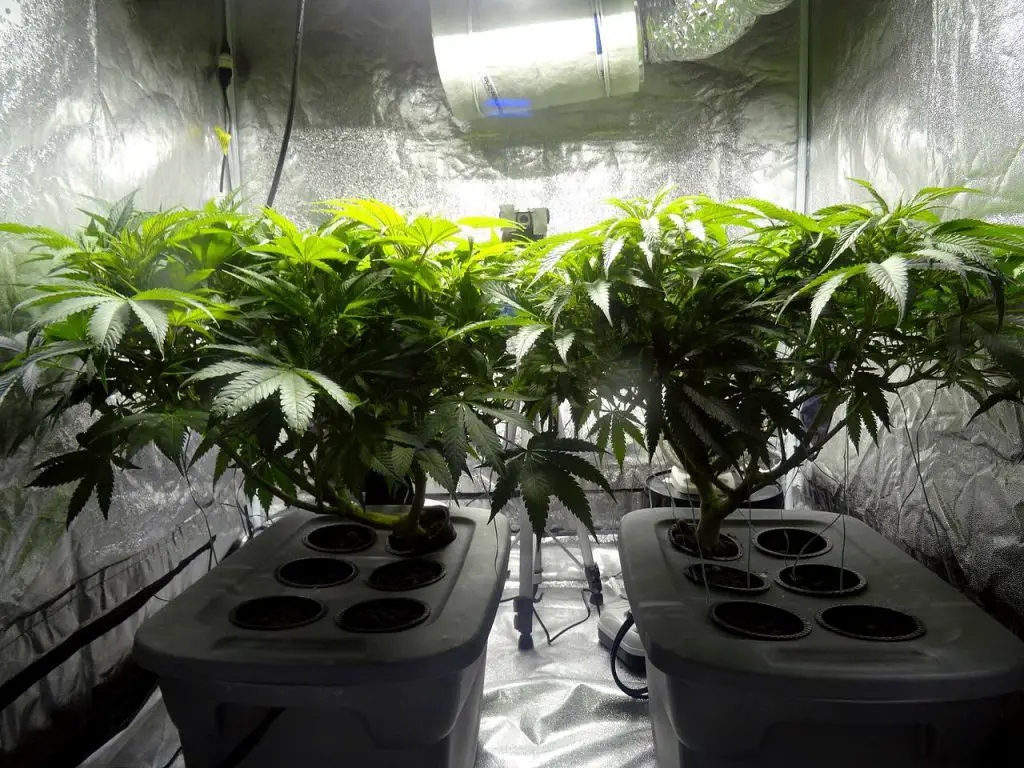When you begin growing, your most important lessons will be how to train your cannabis plants. Lollipopping is a method of training your cannabis to improve the quality and quantity of your yield. It’s a high-yielding technique that’s been praised in cannabis growing circles. In this article, you’ll learn all about lollipopping.
Table of Contents
What is Lollipopping?
Lollipopping is a high-yielding technique that involves pruning your cannabis plant into the shape of a lollipop—more buds on top, and naked stalk on the lower quarter. It involves cutting lower branches to improve exposure and ‘force’ the plant to focus its energies and resources to bud growth.
Since the plant is well exposed to the light and has fewer branches to feed, the buds get bigger and more potent. The process of lollipopping focuses on nurturing few buds while improving their potency, quality, and volume of yield.
Lollipopping is more effective indoors because it allows all the buds to access light from one spot.
Outside, the sun’s rotation exposes the plant to light from different angles and directions. Eventually, the whole plant will receive light from all directions.
Expert growers know how to snap the lower branches by the tip of their fingers, but you can also use scissors to cut them out. It might sound easy, but you need to be more careful neither to cut the shoots nor the leaves.
The focus of lollipopping is to remove the bushes that occur at the lower parts of the plant. These bushes and lower bud sites are usually useless since they don’t get enough light to grow into mature buds.
You should lollipop your plant as soon as it begins making buds. Remove stems that grow under the canopy; they won’t receive enough light.
Also, they are blocking other bud sites that harbor the promise of growing big buds. You’ll also remove all the weak stems that haven’t grown past half the height of the plant, they never yield.
When you’re done, your plant should be in good shape for a bountiful yield. The whole plant will be well exposed to the light, well-formed, and growing from stable stems.
Lollipopping helps because the biggest buds always occur at the top. Even after lollipopping, the top buds will be bigger than the buds below.
You can conveniently say, the lower the buds down the plant are, the smaller they will be— and some might not grow into mature buds.
Does lollipopping cannabis improve the quantity of your yield?

When it comes to lollipopping, fewer branches translate to bigger colas. The plant will not have many buds, but the few ones will be bigger, healthier, and more abundant in cannabinoids. Lollipopping improves the quantity of your yield in the following ways:
The plant is better exposed to the light
Growing weed is all fun until the plant grows into a thick bush— more branches, stems, and leaves. The thicket blocks the light, so the buds can’t grow to their potential because of insufficient light.
At the flowering stage, the plant needs up to 12 hours per day of exposure to light at optimum intensity. Without proper light, the lower buds won’t mature into fat buds.
Lollipopping opens up the plant, allowing light to infiltrate, but also enhances air circulation. These conditions enable remaining top buds to fatten up and improve the quantity of your yield.
The plant can channel its energy to bud formation and growth
When done right, the lollipopping technique can improve your yield tenfold.
When you remove the lower branches, the plant doesn’t lose its energy in the growth of unnecessary stems and leaves— it spends it fattening and nourishing the buds.
Lollipopping doesn’t only improve the quantity of your yield. It also potentiates your buds. By lollipopping, you’re keeping your plant from any deficiency. They suddenly have enough nutrients to expend throughout the bud-fattening process because there are lesser branches to be fed.
The exposure to the light and improved airflow also enrich your buds’ health.
Risks associated with lollipopping cannabis
First, lollipopping isn’t something you should try as a newbie. You can easily destroy the remaining bud sites and ruin the plant. You don’t want your plant sick when it should be making buds.
If you trained your plant at the vegetative stage and it hasn’t grown out of shape, you can skip lollipopping.
When training is done well, most strains will be well-formed for the light to penetrate. It could be better, but don’t risk lollipopping if you aren’t sure. Watch out for these risks;
You can miss the lollipopping zone
Lollipopping, when done haphazardly, can instead reduce your yield. You have to confine it to the right zone and do it with as much care as possible. Any slight move above the lollipopping zone will take away the bud sites with potential.
To stay safe, stick to the lower third of the plant, you cut it out because it gets shaded. Little buds might form, but without access to sufficient light, they will falter. Anything above the lower third is risky ground for a beginner.
You can damage the forming bud sites
When bud sites are just beginning to form, they’ll only be small shoots from the stem.
At this stage, you can easily damage them when lollipopping. The effects might seem small, but that’s a sure way to reduce your harvest.
Lollipopping is not suitable for some strains
Though an effective, high-yielding technique, lollipopping isn’t suitable for some strains. It works best for strains that quickly form a bush and grow into round thickets.
Lollipopping isn’t the best high-yielding technique for cannabis strains that slim their way up. For autoflowering strains, lollipopping might damage bud sites with the promise of big buds.
Autoflowering strains are well exposed and can be infiltrated by low-intensity light. For them, you won’t need lollipopping to boost the yield.
In Conclusion
Lollipopping is worth it. It is one of the most effective ways to boost your yield within a small space. Combined with the SCROG method of growing, you can reap the maximum yield from your grow. However, be careful with the scissor, do it right.

